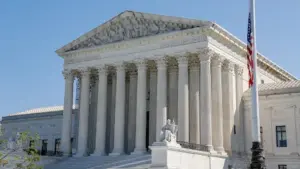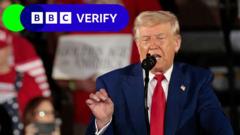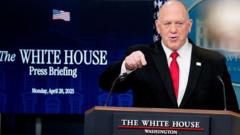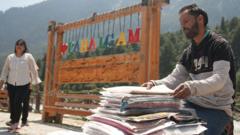As Cuba marks ten years since the historic restoration of diplomatic ties with the United States, the island faces an unprecedented crisis marked by economic struggles and mass emigration.
Cuba's Lost Dreams: A Decade After U.S. Thaw, Despair Reigns

Cuba's Lost Dreams: A Decade After U.S. Thaw, Despair Reigns
A reflection on Cuba's transformation a decade after the restoration of U.S.-Cuban diplomatic relations.
The historic backdrop of the past decade reveals how optimism once sparked hopes of transformation in Cuba. It contrasts sharply with the somber reality today as citizens navigate the palpable despair and ongoing hardships.
Once vibrant with American tourists capturing moments beside icons like the legendary Che Guevara, Havana today echoes with the absence of those visitors. Classically-styled American convertibles that once wove through the bustling streets are now deserted, symbols of a bygone era filled with grandeur.
Luis Manuel Perez, 57, stands as a testament to a forgotten dream. Adorned in a hat, he waits tirelessly in Havana's Central Park, mingling in a sea of fellow drivers. Each day blends into the next as he hopes for tourists to grace his presence and revive his fortunes through a classic car tour. Yet, for many, such hopes remain unfulfilled.
The chilling reality stems from a slew of crippling factors: a reversal of U.S. relations under the Trump administration, economic mismanagement by the Cuban government, and the ongoing effects of the COVID-19 pandemic have collectively decimated tourism. With fewer visitors arriving, those who once showcased Cuba's vibrant culture to the world have witnessed a steep decline in their livelihoods and well-being.
Once buoyant enthusiasm surrounding President Barack Obama's historic engagement in 2014 has dimmed. That moment offered promises of investment and increased tourism, with major American corporations positioning themselves to tap into Cuba's potential. However, today Cubans grapple with power outages, scarce supplies in stores, and a worsening quality of life.
As many locals lose hope and look to emigrate, the vibrant narrative of Cuba, once rich with dreams and starry-eyed visitors, appears tragically dimmed—reminding all of the lost promise of a decade that once held so much potential.
Once vibrant with American tourists capturing moments beside icons like the legendary Che Guevara, Havana today echoes with the absence of those visitors. Classically-styled American convertibles that once wove through the bustling streets are now deserted, symbols of a bygone era filled with grandeur.
Luis Manuel Perez, 57, stands as a testament to a forgotten dream. Adorned in a hat, he waits tirelessly in Havana's Central Park, mingling in a sea of fellow drivers. Each day blends into the next as he hopes for tourists to grace his presence and revive his fortunes through a classic car tour. Yet, for many, such hopes remain unfulfilled.
The chilling reality stems from a slew of crippling factors: a reversal of U.S. relations under the Trump administration, economic mismanagement by the Cuban government, and the ongoing effects of the COVID-19 pandemic have collectively decimated tourism. With fewer visitors arriving, those who once showcased Cuba's vibrant culture to the world have witnessed a steep decline in their livelihoods and well-being.
Once buoyant enthusiasm surrounding President Barack Obama's historic engagement in 2014 has dimmed. That moment offered promises of investment and increased tourism, with major American corporations positioning themselves to tap into Cuba's potential. However, today Cubans grapple with power outages, scarce supplies in stores, and a worsening quality of life.
As many locals lose hope and look to emigrate, the vibrant narrative of Cuba, once rich with dreams and starry-eyed visitors, appears tragically dimmed—reminding all of the lost promise of a decade that once held so much potential.






















